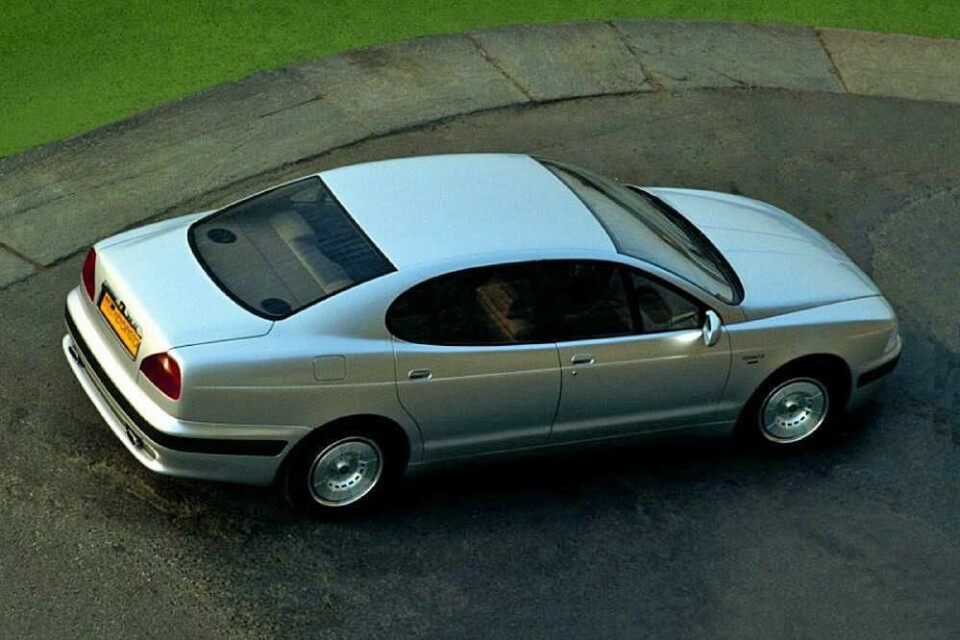
Concept Car of the Week: Jaguar Kensington (1990)
The Kensington was Giugiaro’s vision for a modern Jaguar that made production a decade later and half a world away
By the late 1980s, Jaguar was preparing to start work on the replacement for its XJ40 luxury sedan, a car which stuck tightly to the concept of the original 1968 XJ. As the 1990s approached, new rivals, most notably from Germany but also from Japan in the shape of the new Lexus LS400, were making the charismatic and silky-smooth XJ look thoroughly outdated in other areas.

And so Giorgetto Giugiaro set out to create a concept car that would set new standards for luxury sedans in the 1990s. Rival design house Pininfarina had played its own part in the model’s past by refining the Series 3 version of the original a decade earlier, but Italdesign had more ambitious plans.
Leaving the dimensions of the XJ12 underpinnings unaltered, Giugiaro’s team changed the car’s proportions by reworking its overhangs. As a result its front overhang was increased by 121mm, while the Kensington’s rear was raised and shortened by 185mm compared to the car on which it was based (even if the rear overhang remained generous to say the least). This treatment was usually reserved for Giugiaro’s coupe transformations, whereas sedans traditionally feature short front and long rear overhangs. The result was more dramatic and contemporary fastback that did away with the old XJ’s more traditional three-box silhouette. Whether coincidental or not, the current Jaguar XJ has a rather similar format.

The glasshouse was very generous with the overall height raised 25mm over the XJ. Plenty of glass afforded excellent views, and the windshield and side glass were particularly expansive. The side glass was mounted flush and in a looping graphic that curved into a surprising ellipse shape reminiscent of Jaguar’s past but without slavishly imitating.

The front features a more integrated version of the classic Jaguar grille, flanked by lamps that used the latest technology to create a subtly frowning expression. The rear was perhaps the car’s least successful aspect, with lamps set high and inboard, it looked rather heavy and unstable. But the major theme of the exterior was the soft transition between each element – from lamp details to overall volumes, something that was to become a big trend in the near future.

The wraparound theme continued to the interior, which featured an IP that seem to envelop the driver. The cabin also included the expected plush leather seats and wood, but again used in a modern way. Everything looked production-ready – no science-fiction instruments, graphics or steering grips here.
The Kensington was first shown as an unpowered full-size mock-up at the 1990 Geneva motor show, and built as a fully-functioning prototype for the British show later in the year, featuring Jaguar’s silky 5.3-litre V12 engine.
The Kensington drew considerable attention but Jaguar had only a lukewarm response and soon was involved in other projects. But as is so often the case with any Giugiaro design exercise, if the concept doesn’t succeed in Europe, it will find a home in Asia. The Kensington languished in Italdesign’s warehouse for a few years, but was resurrected later in the decade when Daewoo came looking for a distinctive design to animate a new class of cars that were intended to replace the licensed General Motors designs that had been a mainstay of the marque.

And so Daewoo commissioned Giugiaro to adapt the design of the Kensington into a new mid-size line of cars to be named Leganza which, while not a straight adaptation of the Kensington – it was smaller and front-wheel drive – Giugiaro managed to incorporate all these constraints, and surprisingly, much of the Kensington’s original design spirit.
It was an interesting fate for the Jaguar, designed as a luxury car for the future, a decade earlier, and half a world away. More pertinently, Jaguar’s new rival Lexus also knocked on Giugiaro’s door when it was developing its GS300 – the result was a handsome, thoroughly modern sedan that made the contemporary Jags look rather antiquated. No prizes for guessing on which design that was based…




